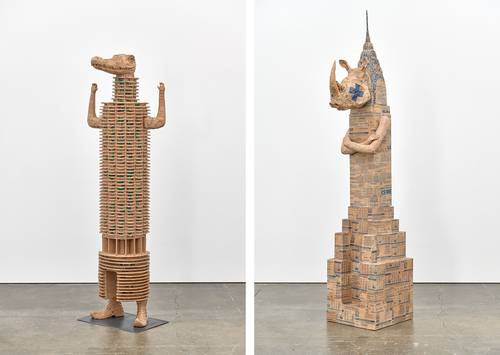The artist Damián Ortega maintained that he identified more with the history of caricature in Mexico than with that of painting; meant discard the idea of art, like what was being done in schools or what we were seeing in spaces, galleries or museums
. This is what she said at the book presentation Estridentópolis (RM) in the Palace of Fine Arts.
The volume explores the ideas of the estridentista movement of the early 20th century that permeate Ortega’s work, mainly the utopian city Estridentópolis. Through the review of archival material, drawings, collagesphotographs and sketches is a kind of workbook of the project that brought together around 50 works.
The creator recalled that after a moment of school crisis, he worked with the cartoonist Rafael Barajas The Snooper. “A very lucid moment, starting with a character, and there was that world of exponents who were making a new cartoon in Mexico.
I understood and identified much more with the caricature than with the history of painting in Mexico: Naranjo, Helio Flores, Ahumada and all the people who were making cardboard; much more than with Cuevas, Felguérez or what was happening with La Ruptura, which was already an institution.
The caricature, continued Ortega (Mexico City, 1967), “was a form that had distribution and the art was on the street and not in a protected space. There was a lot of talk about political art; However, it was presented within a very closed context. The presence of the caricature was radical. Was The Daywhich was a presence of daily questioning.”
It was the time when the artist Abraham Cruzvillegas opened the world of poetry to Damián Ortega, who became hooked on that literary genre, urbanity and the avant-garde. After holding an exhibition where he used a lot of cement, the artist thought that the piece could not only be the material it was made of, but it had to do with the waste that was being generated as a surplus
.
Ortega cut out the sacks in his workshop to make figures and experiment: came the idea of making Judas using paper as papier-mâché, as well as uniforms, textiles and abstract drawings. Hence the idea of resuming that spirit, with imagination and a spirit of avant-garde or questioning of conventions.
.
He stated that in Estridentópolis, together with the designer Alejandro Magallanes, We include all this background that makes reading the pieces very rich, because you are not only seeing the result, but where it comes from and where it is going and what will happen in the future. Art is a moment that has been coming for a long time and will end long after. It gave it all that freshness and lightness
.
Additionally, an essay by art historian Lynda Klich was included, which He was truly rich in looking for so many references, in being so thorough. It was like bringing the history of this little-recognized and not so abundant art to the present. It was a pleasure to write this text collectively.
.
For his part, Klich commented that “the encounter with Ortega’s Estridentópolis represents a journey of the past and the present, a struggle between the monumental and the ephemeral, a meditation on the grandiose and the humble. Altogether, the more than 50 works that make up the set bring together the extraordinary and the mundane.
“Garments made of paper materialize the bodies of workers, while signaling their individuality; Thus, Ortega’s Estridentópolis not only evoked the revolutionary potential and morality, noted by Manuel Maples Arce, but also conveyed the disheartening vision of his failure. In other words, he condenses the paradoxes of lived realities.
“Estridentópolis participates in the history of art, architecture and design, on the one hand, and revolution, utopias and unfinished moralities. The changing meanings make Ortega’s Estridentópolis in the 21st century acquire a very different meaning from that of the previous century. “The city built by Ortega exposes its entrails.”
